Padrón: History on the Camino de Santiago
Padrón: History of the Camino de Santiago
According to legend, the Apostle’s disciples, Athanasius and Theodore, guided by a star, transported his mortal remains from the Palestinian port of Jaffa to this Galician coast. When the boat carrying the Apostle’s remains docked, it was tied to a "Pedrón," an ancient Roman milestone, a word that gives this town its current name. His remains were later moved to Mount Libredón in Compostela, where he was buried.
The "Pedrón" is on permanent display in the Church of Santiago in Padrón. A replica of the stone can be found on the riverbank in front of the church. The original's central part is worn down because, in the past, pilgrims passing through developed the custom of embracing the stone.
Around the year 40 AD, the Apostle James arrived from Palestine to what is now Spain to begin his preaching. When he reached Galicia, he regularly preached in a rocky area on the outskirts of Padrón called "Santiaguino do Monte."
According to legend, in this rocky area where the Apostle preached, he used his staff to make a spring of water emerge from the rocks, which was said to have miraculous powers. This sanctuary became an iconic site during the Middle Ages. During Holy Years, it was customary to make the pilgrimage to Santiago and then finish at this very spot.
From the Middle Ages to the present day, this village of Padrón has witnessed countless pilgrims passing through, enjoying its history and legends.
Every 25th of July, the Romería de Santiaguiño is celebrated, a deeply rooted tradition in the region. It begins with a well-attended procession that departs from the parish church and ends at Mount Santiaguiño. A statue of the Apostle known as "Parrandeiro", kept in the church, is carried on the shoulders of the villagers. The celebration concludes with a mass at the sanctuary. After the religious events, a picnic is held.
Would you like to book your Camino de Santiago?



